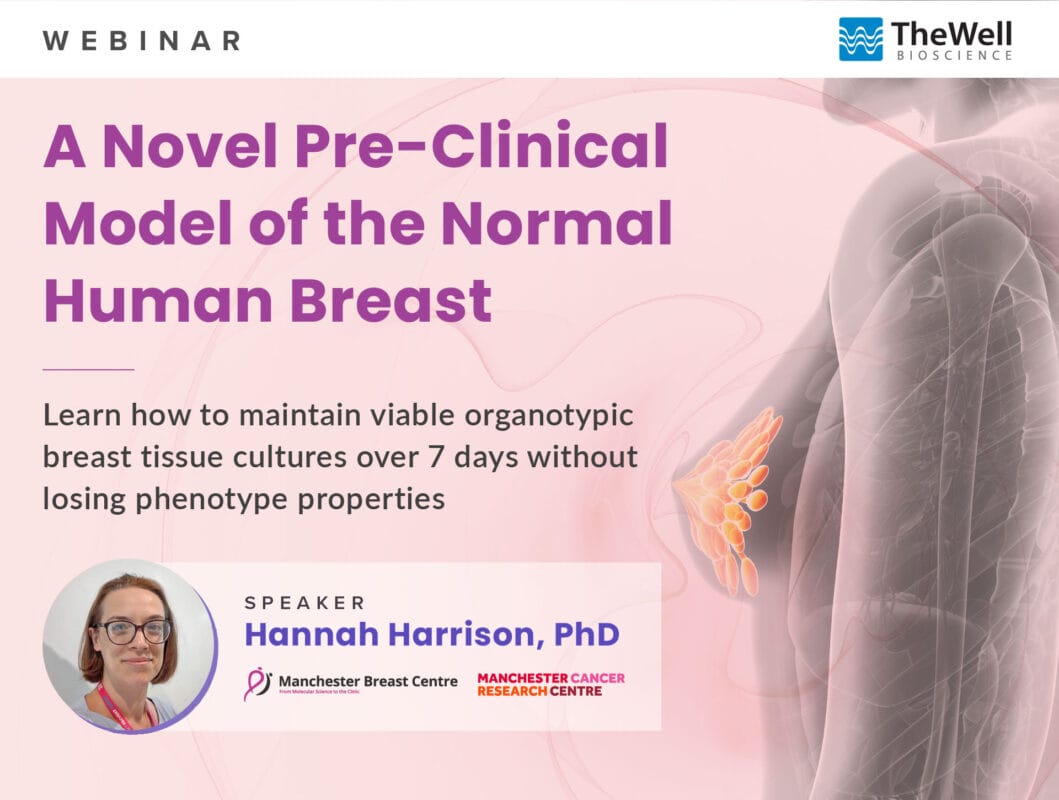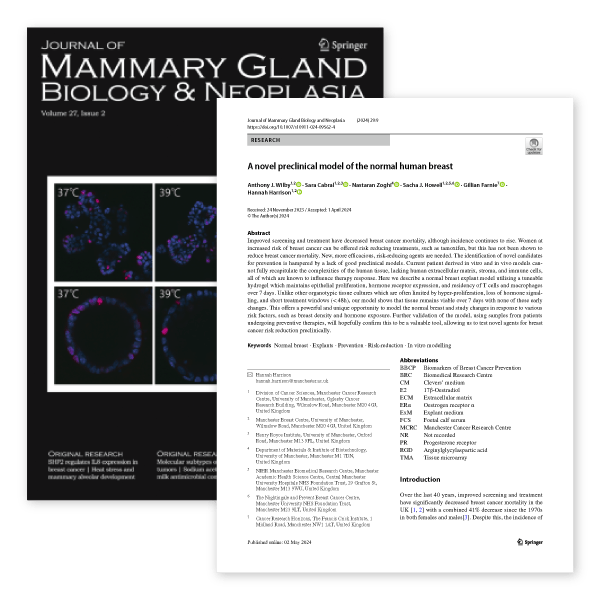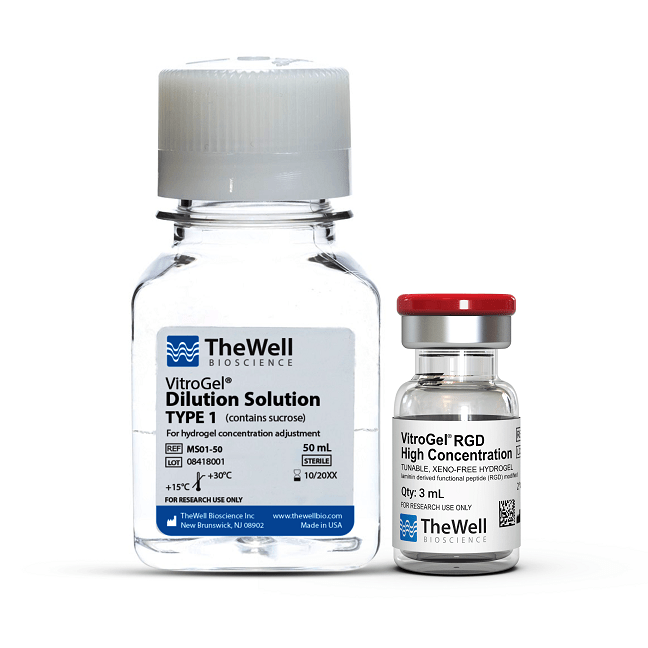Webinars
A Novel Pre-Clinical Model of the Normal Human Breast
On-Demand Webinar
SPEAKER

Hannah Harrison, PhD
The University of Manchester
Manchester Breast Centre,
Manchester Cancer Research Centre


WATCH THE WEBINAR
A Novel Pre-Clinical Model of the Normal Human Breast
Learn how to maintain viable organotypic breast tissue cultures over 7 days without losing phenotype properties
Improved screening and treatment have decreased breast cancer mortality, although the incidence continues to rise. Women at increased risk of breast cancer can be offered risk-reducing treatments, such as tamoxifen, but this has not been shown to reduce breast cancer mortality. New, more efficacious, risk-reducing agents are needed. The identification of novel candidates for prevention is hampered by a lack of good pre-clinical models. Current patient-derived in vitro and in vivo models cannot fully recapitulate the full complexities of the human tissue, lacking human extracellular matrix, stromal, and immune cells, all of which are known to influence therapy response.
Here we describe a normal breast explant model utilizing a xeno-free and tuneable hydrogel, VitroGel®, which maintains epithelial proliferation, hormone receptor expression, and residency of T cells and macrophages over 7 days. Unlike other organotypic tissue cultures, which are often limited by hyper-proliferation, loss of hormone signaling, and short treatment windows (<48h), our model shows that tissue remains viable over 7 days with none of these early changes. This offers a powerful and unique opportunity to model the normal breast and study changes in response to various risk factors, such as breast density, and hormone exposure. Further validation of the model, using samples from patients undergoing preventive therapies, will hopefully confirm this to be a valuable tool, allowing us to test novel agents for breast cancer risk reduction pre-clinically.
- Normal breast tissue can be cultured for 7 days with no changes in proliferation or viability.
- Tissue maintains expression of oestrogen and progesterone receptors and remains responsive to hormones.
- Using this model, we aim to identify mechanisms of resistance to preventative agents and screen for novel approaches to breast cancer risk-reduction that could be explored in the next generation of clinical prevention trials.
Presenter
Dr. Hannah Harrison is a research fellow at the University of Manchester with over 20 years of experience in cancer research.
Following graduation with a BSc (Hons) in Biology, Hannah began her research career at the Wellcome Trust Sanger Institute in Cambridge, initially working on the Human Genome Project, and then with Allan Bradley and Jos Jonkers developing and studying mouse models of cancer.
Dr. Hannah Harrison completed her Ph.D. in Oncology at the Paterson Institute for Cancer Research in Manchester. Working in Rob Clarke’s lab, her research investigated breast cancer stem cell identification, isolation, and signaling. Hannah’s interest in cancer stem cells continued through post-doctoral positions studying hypoxia, its effect on tumor-initiating cells, and its role in metastasis with Goran Landberg and Paul Shore.
In her current role, Hannah continues to focus on breast cancer development and progression, covering topics from risk and prevention to invasive and metastatic disease.
The translation of targets from lab to patients has a high attrition rate due to poor preclinical models and limited in vitro tools to answer important biological questions. To this end, over the past 8 years, Hannah has focused her research on the development of novel models and tools that allow the assessment of normal tissue biology, cancer stem cell behavior, tumor heterogeneity, the tissue microenvironment, and metastasis.
Her passion for 3Rs (Replacement, Reduction, Refinement) research has led her to commit a great deal of effort to the development of alternatives to in vivo modeling and, with funding from the NC3Rs, Cancer Research UK, Breast Cancer Now, Prevent Breast Cancer and FRAME, she has developed both pre-cancerous and metastatic disease models which replace or reduce our reliance on animals in research.





